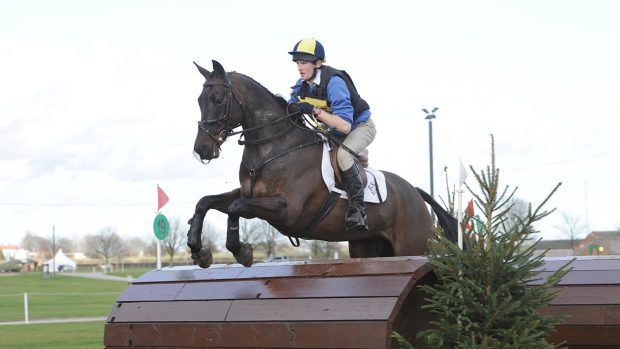Headshaking can be seasonal, where the signs are only present during defined periods of the year, or non-seasonal, when it occurs all year round. This has led to the misconception that the disease is akin to hayfever in humans. There is no evidence that this is in fact the case.
It is more likely that a localised allergy in the nose or a direct physical irritation – either inside the nose or on the face, eyes or mouth – is a trigger for the disease. These trigger factors can be seasonal or non-seasonal, such as smoke, stable bedding fumes, sunlight, wind, cold, rain or dry.
The condition, which we believe is a neurological one affecting some components of the main sensory nerve to the head of the horse, is present in headshakers, but a trigger is needed to kickstart the symptoms.
Therefore headshaking can be explained as: disease + trigger factor = clinical signs.
The other aspect to consider is the frequency of outbreaks. An intermittent headshaker only shows signs under defined conditions, such as ridden work, in a certain lane or school, or in bright sunlight.
It is important to recognise that in some cases the trigger is, in fact, disease – for example, dental disease, sinusitis, oral pain or ear mites. Some horses have previously had head trauma (such as a kick, fall or cut) and others have had head or facial surgery. Try to find out as much about your horse’s history as you can.
We know very little about the disease but we do know that it is not a vice – the horse is in fact in pain during these episodes and should be treated sympathetically. It is not acceptable to simply fit a standing martingale.
For now, treatments are poor at best. Drugs that may help all cause some problems in horses. Many people turn to various natural and homeopathic remedies, but results can be disappointing.
Accepting the fact that we cannot, at present, do much, the best approach is to:
1. Establish the situations under which the condition is best/worst and avoid circumstances that combine the trigger factor with the cause. This explains why face/nose/ear masks help in some cases.
2. Get your vet to perform a full neurological examination and facial investigation.
3. Check competition records over previous years to see whether the horse has been out of competition for regular periods.
| For practical advice on coping with a headshaker, check out the September issue of HORSE magazine, on sale on Thursday 21 August. Click here to subscribe to HORSE magazine, which is packed full of useful horsecare and training features every month |




